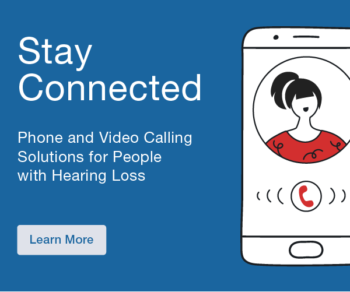Hearing Aids, Implants and Other Devices
Hearing Aids and Assistive Devices
Should I get a hearing aid?
Have your friends or family been suggesting that this would be a good idea? Do you feel that people are mumbling? Before you purchase any hearing aid, see a qualified audiologist. Your audiologist will test your hearing and make the appropriate recommendations. If you are a hearing aid candidate, your audiologist will guide you through the selection process.
I have been told that hearing aids will not help nerve deafness.
Is this true?
Medical intervention usually does not cure nerve deafness but in most cases it can be helped through properly fitted amplification. A hearing test done by a qualified audiologist will help identify what type of hearing loss you have.
Do I need two hearing aids?
People hear better with two ears than with one. Binaural hearing improves your ability to understand speech in noise and helps you to locate the sounds around you.
Can I get hearing aids that filter out background noise?
Understanding of speech, especially in noisy environments, will vary depending upon your degree of hearing loss, how well the hearing aids have been fitted, how frequently the hearing aids are used, and the signal-to-noise ratio present in the environment. Many recent developments in hearing aid design help you to cope with adverse listening situations.
Will I have to let my hair grow long to cover two large hearing aids in my ears?
In recent years, hearing aids have become smaller and more cosmetically appealing. Your audiologist can review the style choices appropriate for your hearing loss and personal preferences.
Will hearing aids restore my hearing to normal?
Hearing aids are designed to aid hearing but they cannot restore hearing. They are only a part of the hearing rehabilitation process. Your audiologist will help you with all aspects of your journey towards better hearing.
Are hearing aids too expensive for me?
Your hearing aids could be the best investment you make for yourself. Good communication is fundamental to all our personal relationships. The variety of hearing instruments available makes it very likely that you will be able to find good amplification in a comfortable price range.
What is a telephone coil?
Often, as a hearing aid wearer, when you place a telephone receiver to your ear your hearing aid makes an unpleasant whistling noise. A telecoil option, added to your hearing aid, uses the electromagnetic energy produced by the telephone and eliminates the annoying feedback. The hearing aid will have a switch allowing you to choose between the standard microphone mode and telephone compatible mode. Ask your audiologist to explain the features of your hearing aid to you.
Do I have to wear my hearing aids all the time?
You haven’t heard well for a long time and you have adapted to imperfect hearing. You have to relearn what “normal hearing” is and one of the best ways to achieve this is to wear the hearing aids as much as possible, as consistently as possible during waking hours. You may have to increase wearing time gradually in the beginning but full time use is the ultimate goal. Your audiologist will help you to accomplish this.
How do I care for my hearing aids?
Very little care is required. You must keep the hearing aids clean and dry. Every 10 to 14 day fresh batteries must be inserted. Your audiologist will show you how to do these things when you get the hearing aids for the first time and you will be given a booklet of instructions to take home with you.
Cochlear Implants
What is a cochlear implant?
A cochlear implant is an electronic device that is designed to provide hearing to those with profound deafness. Part of the device is surgically implanted into the inner ear and part is worn externally. As a prosthetic device, the cochlear implant stimulates the auditory or hearing nerve directly, bypassing the damaged part of the inner ear or cochlea. Many viable nerve fi bres remain in the auditory nerve even in cases of profound deafness, and the cochlear implant can restore activity to this nerve and the hearing pathway.
Many individuals who have lost their hearing after acquiring speech and language (post-lingual deafness) are capable of excellent speech understanding with their implant. When children who are deaf are provided with cochlear implants they can perceive speech and environmental sounds previously unavailable to them. As they learn to attach meaning to the sounds they are hearing, they build the foundations for spoken language.
How does a cochlear implant work?
The implant has two components, an externally worn microphone and processor and the internal electrode array. The microphone picks up sounds near the ear level and sends it to the speech processor. The speech processor takes the acoustic signal and codes it for speech electrically. The signal is sent to the transmitter worn on the head where it is then sent through the skin to the implanted device. Under the skin, the receiver decodes the signal and sends it to the electrode array. The electrode array distributes the signal and stimulates the nerve endings in the cochlea, producing nerve impulses. The impulses are sent to the brain where they are interpreted as sound.
Who is a candidate for a cochlear implant?
Cochlear implants are available to children and adults in Canada who meet the following criteria:
Adults
- Must demonstrate a moderate to severe/profound sensorineural hearing loss
- Have limited benefit from optimally fitted amplification
- Hearing loss can be acquired before (pre-linguistic) or after (post-linguistic) learning speech and language
- No medical contraindications
- Realistic expectations and a desire to be a part of the hearing world
Children
- Age 0-18 years
- Severe-to-Profound sensorineural hearing loss bilaterally
- Receive little or no benefit from appropriate hearing aids
- No medical contraindications
- An educational placement where the development of listening and speaking skills is emphasized
- Family support that includes the commitment to the rehabilitative process
What is the process of getting a cochlear implant?
Before receiving a cochlear implant, an extensive evaluation is performed that includes a hearing aid evaluation, an audiological evaluation, an otological evaluation, CT scan, a speech-language evaluation, and possibly a psychological evaluation. These tests are performed to ensure that candidacy requirements have been met and that certain benefits may be provided by the implant. Counseling will also be provided by the cochlear implant team regarding the benefits and risks of cochlear implantation.
This will include the medical and surgical risks, the possible benefits to be expected, and the follow-up necessary to ensure an appropriate fitting of the speech processor and rehabilitation.
When does surgery take place?
Once patients have completed the necessary testing to determine candidacy, surgery can be scheduled. Surgery is performed under general anaesthesia, and typically takes two to three hours to complete. The electrode array is fed into the cochlea, and the receiver is placed behind the. Most hospitals require a one to two day hospital stay before going home.
What happens after surgery?
Four to six weeks following surgery the speech processor will be programmed. Threshold and comfort levels are obtained for each electrode on the internal array, which creates a “map”that is stored on a computer chip inside your processor. This process is usually done in two to three hours.
During the first three months of wearing the device, some fine-tuning needs to take place. Numerous “mapping” sessions may need to be performed to obtain the best possible sound for each patient. Typically once a stable map is established, the map is checked and speech perception testing is performed every six months following activation.
Why is rehabilitation important?
Rehabilitation following cochlear implantation offers a structured approach by which patients learn to identify and associate meaning to the new sounds they are hearing. For children, rehabilitation is vital to develop an understanding of what is being heard through a cochlear implant. Therapy allows children to take the restored level of sensitive hearing and learn to understand spoken language and produce intelligible speech. Unlike adults who have lost their hearing after the development of speech and language, deaf children have no auditory memories to draw upon to understand spoken communication. Rehabilitation is a lifelong process that takes the child through language acquisition learning to attach meaning first to syllables, then to words, phrases, and sentences and ultimately to conversation. For adults, rehabilitation can provide the structure necessary to fine-tune their listening skills. Some adults feel that they are receiving enough stimulation in their everyday life that therapy is not needed.



